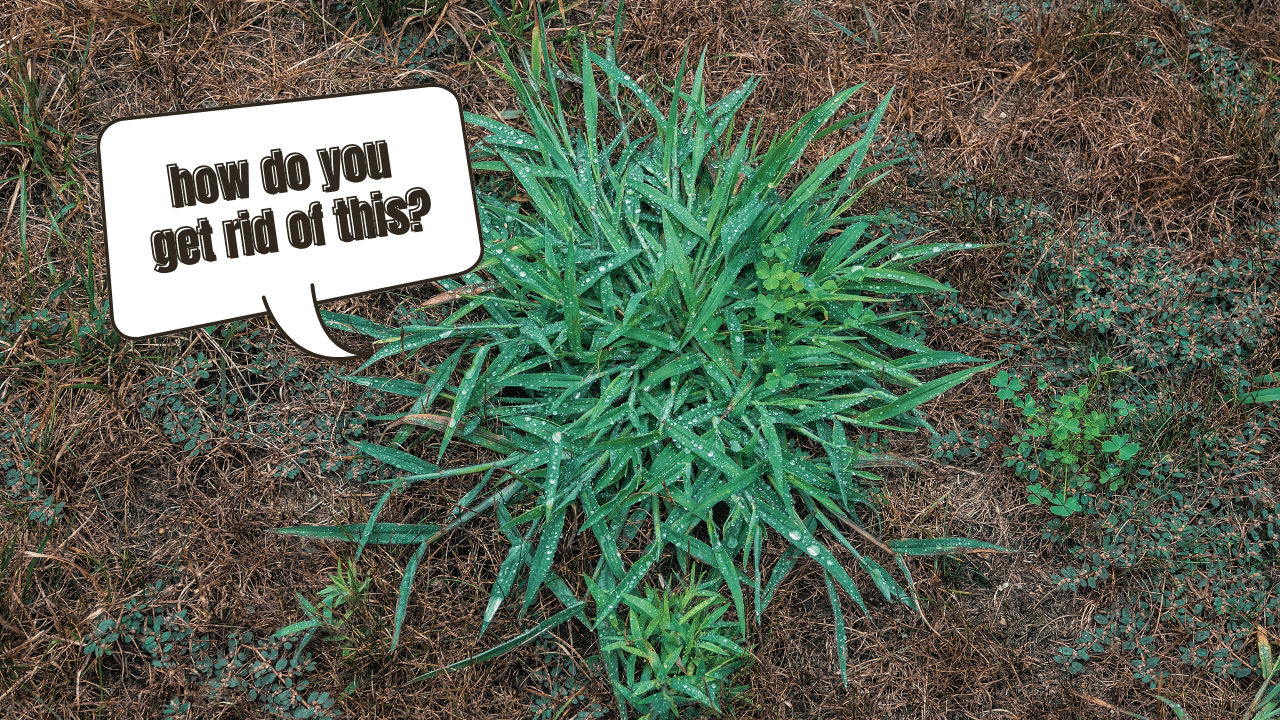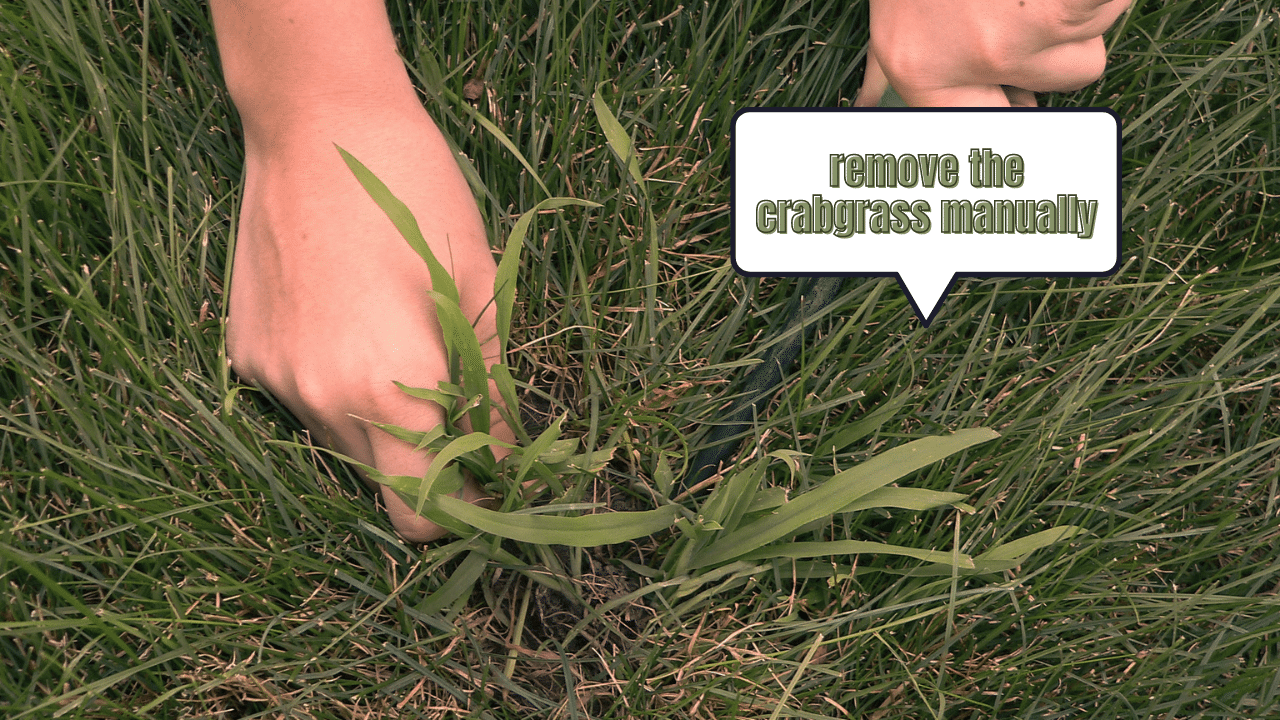We all dream of admiring freshly-cut, lush green lawn in the summer months... as we bask in the glory of the sun. But for some homeowners, the view can be an eyesore if there's pesky crabgrass thriving on the lawn.
Also commonly known as finger grass, crabgrass has distinctive blades that resemble fingers. It is a common lawn pest that may destroy your turfgrass. (Related: 15 Different Types of Weeds That Grows In Florida Lawns)
When overlooked, crabgrass may quickly take over your yard. So if you want to prepare for the following summer– you may want to read on as we talk about how to get rid of crabgrass effectively.
Killing Lawn Weeds in Summer
In the summer, when crabgrass (and other common lawn weeds) is plaguing your lawn, and you didn't apply a pre-emergent product, you can still attempt to control the spread using a post-emergent treatment. (Related: How To Kill and Control Weeds In Your Yard)

While it is not as effective as a pre-emergent treatment, it will help control your crabgrass lawn infestation.
Fertilize Your Lawn Regularly to Prevent Crabgrass
Since crabgrass thrives in environments where turfgrass struggles to survive, you will find these weeds in arid areas where it doesn't get proper nutrients for growth.
If your soil lacks the proper nutrients, you'll likely have a spotty yard with visible patches of crabgrass. To keep crabgrass away, opt to fertilize the yard throughout the summer months. Fertilize the lawn with an interval of 6 to 8 weeks from the spring until the grass dies in the fall.
The fertilizer will provide your soil with the proper nutrients to have a lush, green lawn. This will also prevent weeds, such as crabgrass, from growing.
Use Crabgrass Preventer on Your Lawn
Crabgrass is one of the most common lawn pests that may ruin your yard before you know it. You may want to use a crabgrass preventer to control the spread of this weed on your lawn. It is a herbicide that's specifically formulated to kill off the crabgrass during its germination process.
This can be found in standard lawn fertilizers, allowing you to kill two birds with a single stone. You can fertilize the lawn while eliminating the traces of crabgrass activity.
Important Note: Skipping this step may render the crabgrass preventer ineffective. It may just stay on top of the soil without doing what it's intended to do.
Make Sure Your Lawn is Getting Enough Water
Like other common lawn weeds, crabgrass is known to thrive in arid environments. They do not require too much water to grow. A simple way to ensure crabgrass is off your turfgrass is to regularly supply the lawn with the adequate amount of water it needs.
How often you water the lawn will depend on the climate in your region and the annual rainfall in your area. A good rule of thumb is to ensure the lawn receives at least 1 inch of water in a week to keep the unwanted weeds away.
Use Herbicide on Existing Crabgrass
The good news is that some herbicides can help you eliminate crabgrass after application. Select certain herbicides that are designed to kill the pesky crabgrass in your yard– not the healthy grass.
There are several forms of crabgrass herbicide on the market today, and they can be spread in different ways. Some products are in a spray bottle that you need to spray, while others are in a fertilizer bag that you need to spread around.
Pull the Crabgrass Out by Hand (Manual)
Though considerably manual, you can pull the crabgrass out of your lawn by hand. This is ideal if you don't mind doing hard labor. While this will take time and effort on your end– it is an effective way to deal with your crabgrass problem at hand. Ensure to wear protective gear, such as gardening gloves, to avoid injuries.

If you have a shovel at home, you can also use this tool to pull out the crabgrass from your lawn. It will make the manual process a whole lot easier.
Important Note: Despite removing every trace of crabgrass by hand, this doesn't mean it won't come back. Remember that crabgrass can spread rather rapidly. So if there's crabgrass in your yard, there may be seeds in the soil.
Expert-Backed Tips to Prevent Crabgrass
As the adage goes, prevention is better than cure. Here are other tips to prevent crabgrass damage on your lawn:
Getting Rid of Crabgrass in the Summer Effectively
Crabgrass and other notorious lawn weeds may damage your turf before you know it. Since they need little nurturing to survive, they can take over an entire lawn when overlooked and ignored.
Homeowners who skipped on routine lawn treatments in the spring and summer months may be surprised to see weeds taking over. But don't worry, it's not too late. Getting rid of crabgrass in the summer is possible– if you know what the proper measures to follow.
Frequently Asked Questions (FAQs)
What does crabgrass look like?
Crabgrass is a clumpy, coarse weed that resembles grass blades in green or yellow color. It's unattractive, but it's also harmful to your lawn's health.
Is crabgrass bad?
Crabgrass tends to take over turf and make healthy grass grow more complicated. The weed outcompetes grass for limited nutrients and prevents your grass from nourishing.
Can I get rid of crabgrass without chemicals?
Each year during fall, crabgrass dies on its own. If you can wait until winter, the weed will be gone, and if you use a pre-emergent next spring, crabgrass will most likely not return. You may also manually remove small crabgrass infestations by pulling them off. Then, to reduce the chances of it returning, practice good lawn care habits.
